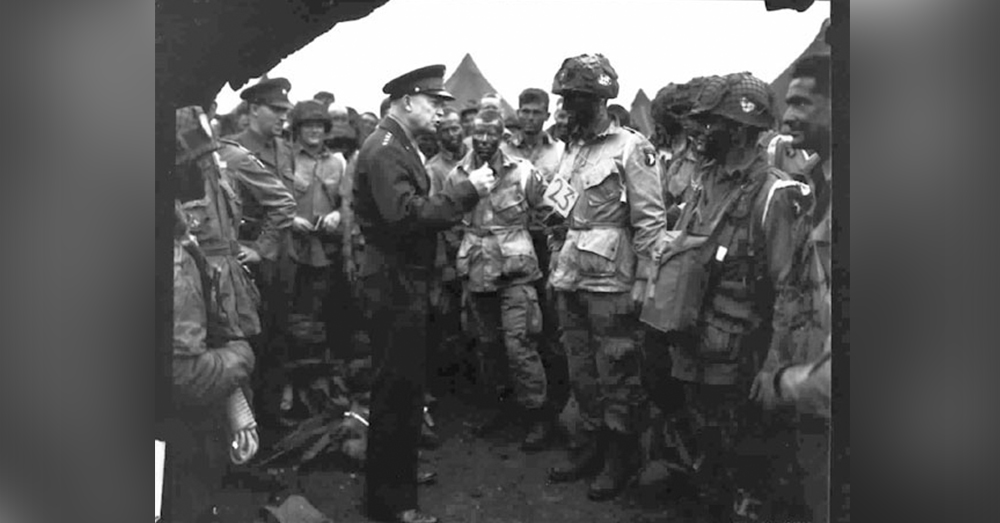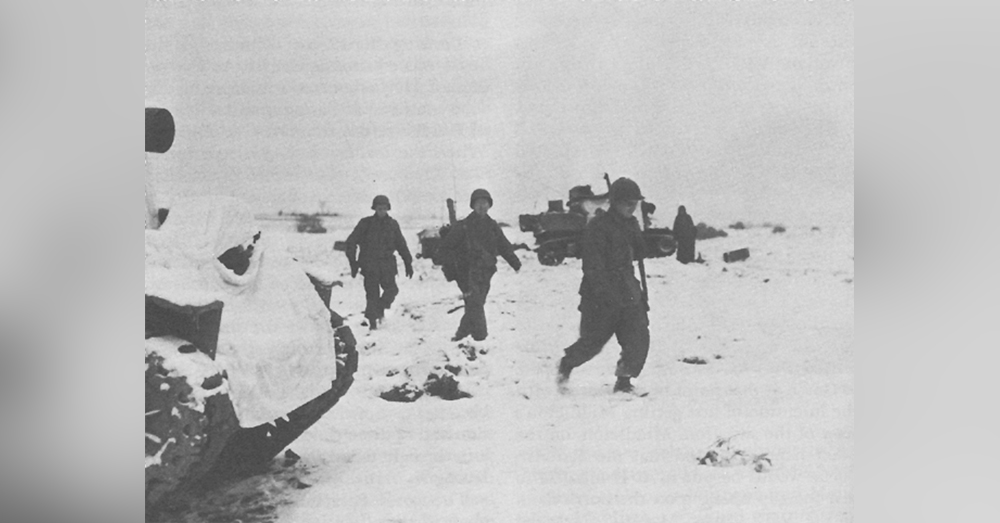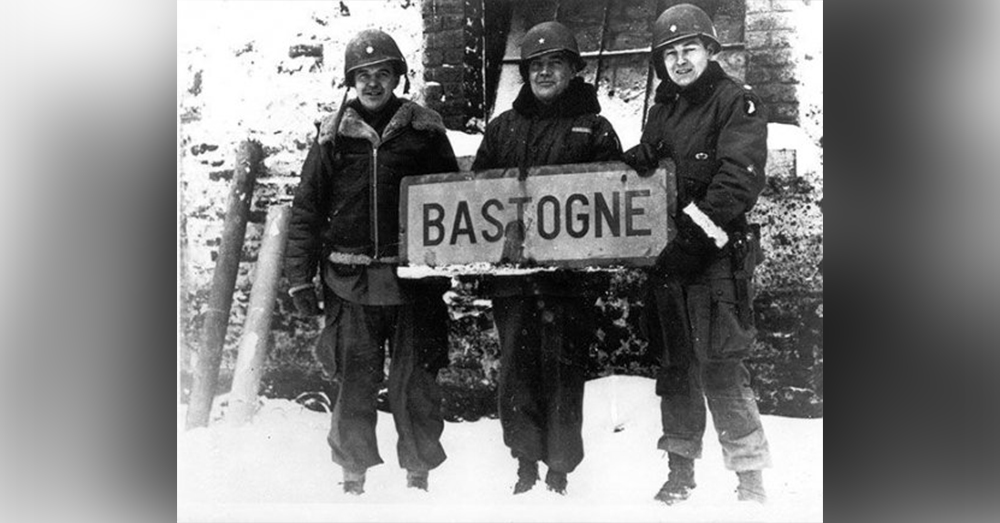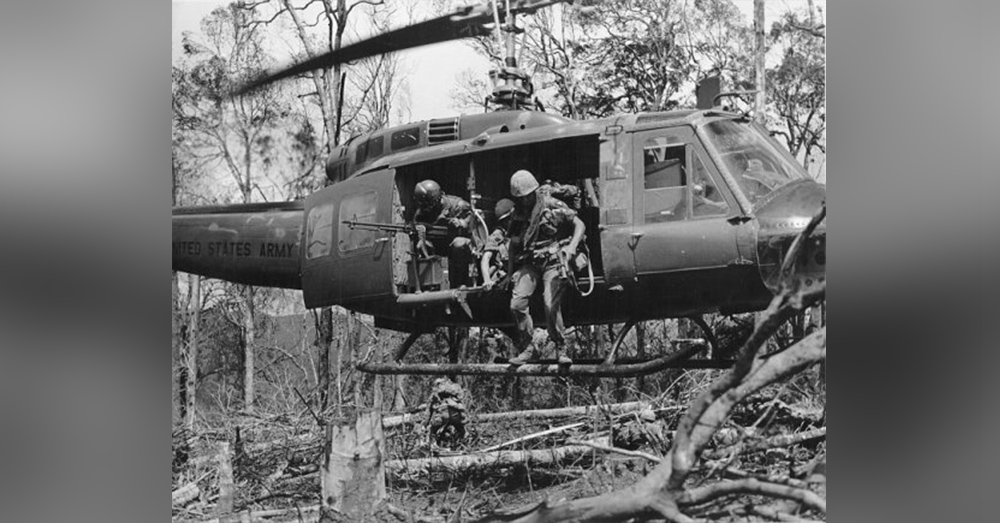
The History of the 101st Airborne Makes Most Other Units Pale In Comparison
There are many storied units in our United States military, but few have a history as battle hardened as the 101st Airborne, otherwise known as “The Screaming Eagles.”
Some of their greatest battles include the D-Day Invasion at Normandy, “Hamburger Hill” in Vietnam; they were the strong, enveloping “left-hook” against the Iraqi forces of Saddam Hussein in the Persian Gulf War, and undertook “Operation Dragon Strike” in Afghanistan. But their greatest feat of raw courage and determination has to be their unbelievable stand against the massive German counterattack in the Ardennes Forest around the town of Bastogne in December 1944.
The troops of the 101st had been pushing the Germans out of France since they jumped into the battle at Normandy June 6th. They had been more successful and had advanced much farther and faster than either the Allies had planned, or the Germans had expected.

General Dwight D. Eisenhower gives the order of the Day. “Full victory-nothing else” to paratroopers in England, just before they board their airplanes to participate in the first assault in the invasion of the continent of Europe.
Six months after their Normandy landing, the 101st had pushed the Germans back into the Ardennes Forest. Their intent was to take the small Belgian seaport of Antwerp to be able to have a place to bring in Allied supplies for the troops advancing into Germany.
The Germans could see what the Americans were intending and determined to prevent it. They planned and supplied a massive counterattack against the Americans.

Paratroopers of the 101st Airborne Moving up To Bastogne.
The 101st Airborne troops had been fighting the Germans for six months straight. By this time they were tired and ill-supplied. The fact is that they had moved so quickly and effectively against the Germans, fighting almost every day for six months, that they had stretched their supply lines too thin. The Germans knew this too, and knew that this might be their last chance to halt the Allied advance and do it with such affect as to cause the Allies to sue for a peace treaty that would favor the Axis powers and keep Hitler in power.
On December 16th, the Germans now reinforced with 200,000 fresh troops and supplies, including Panzer tanks, opened up on the beleaguered troops of the 101st Airborne with a two hour long artillery barrage to soften their defenses.
Then, they launched their fierce attack.

The 101st Airborne is deployed over Europe.
The 101st was ordered to hold Bastogne and another smaller town, Vith, at all costs. They knew also that reinforcements under General Patton were at least a week away. The weather was bitterly cold and snowy. They were war weary, had little ammunition and very little food and without winter gear. But they knew what they had to do.
Two days later, December 18, they were completely surrounded.

A souvenir from the battle.
During the night, the 101st’s medical company was overwhelmed and destroyed by the Germans in a night raid. By the morning of the 19th, the Americans were outnumbered by the Germans by 5-1. The American commander, Brig. Gen. Anthony McAuliffe, seeing the situation, did the only sensible thing in a situation like that; he ordered his troops to form in a small 360-degree defensive circle around the 333rd Artillery Battalion’s guns.
This proved to be an advantageous decision.

Brig. Gen. Anthony McAuliffe led the 101st at Bastogne.
The Germans would attack one part of the perimeter, and the Americans could communicate where the Germans were massing for an attack and reinforce that part of the perimeter, over and over again. They simply moved to meet the attacks wherever they were focused.
The artillery fire from the 333rd was so accurate it took out many of the Panzer tanks as well.

Two members of the 101st Airborne Division fire into a North Vietnamese bunker near the top of “Hamburger Hill” overlooking the A Shau Valley.
This is when the German commander, von Luttwitz, in frustration, and in the hopes of winning the upper hand, sent a message to the American commander, McAuliffe. The note read: “There is only one possibility to save the encircled U.S.A. troops from total annihilation: That is the honorable surrender of the encircled town. In order to think it over a term of two hours will he granted beginning with the presentation of this note.”
To which McAuliffe famously answered thusly: “To the German commander. NUTS! The American commander.”

Members of the 101sdt Airborne are airdropped in Vietnam.
The Germans spent hours trying to decipher the meaning of the enigmatic message from the American commander. They finally got it and were infuriated, and continued their attack.
On December 23, the skies finally cleared and the 101st began to be resupplied and reinforced by air and began to, once again, force the German armies from the field. U.S. Army Air Force P-40 fighter planes were able to come in to give them the needed air support as well. They essentially eliminated the German Panzers, which were still painted in the summer green camouflage and stood out against the snow covering the fields and roads they had to operate in.

Soldiers of the 101st Airborne Division train at Fort Campbell, Kentucky.
This was, in essence, the last effective counter attack by the Germans in WWII. The 101st Airborne, bone-tired, ill-supplied and running out of food and ammo, suffering from the bitter winter cold without proper winter gear, dug in their heels, got into a tight defensive circle, and fought like hell against far superior numbers and prevailed.
It was the beginning of the end for the Germans after that fierce battle in the winter shrouded forests and fields around the Belgian town of Bastogne. They were in full retreat until the end of the war five months later on May 8, 1945.

Strike Soldiers with the 2nd Brigade Combat Team, 101st Airborne Division personnel security detachment conduct ready-up drills during weapons training in Kuwait in 2007.
The 101st Airborne, the Screaming Eagles, continue to be one of the premier fighting units in our military. It has earned its place in our military history with guts, determination and fighting spirit. It has earned its motto and wears it proudly: Rendezvous With Destiny.
Indeed, they have made destiny come to them.
The Veterans Site sends its respect and thanks to all who have served and to those who serve presently in the U.S. Army’s 101st Airborne Division, the Screaming Eagles. You have earned your honor and your place in history. You have often been the tip of the spear in some of this nation’s most difficult times.
We offer you a loud, Hooah!